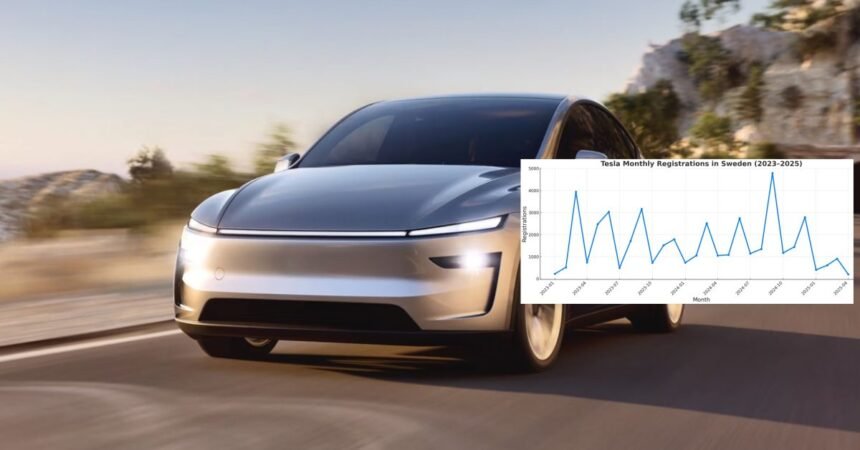Tesla, the electric car company, is facing a significant decline in sales in Sweden. In April 2025, only 203 vehicles were delivered in the country, marking an 80% decrease compared to the previous year. This sharp drop comes after Tesla had its best year in Sweden in 2024, delivering an average of 1,825 vehicles per month despite facing boycotts related to a unionization battle.
The current decline in sales can be attributed to a larger boycott against Tesla due to its CEO’s involvement in politics. This boycott is impacting Tesla’s sales not only in Sweden but also across Europe. Despite having a considerable inventory of old Model Y vehicles and introducing the new Model Y AWD, Tesla is struggling to maintain its sales numbers in the country.
The introduction of the new Model Y RWD next month is seen as a potential lifeline for Tesla in Sweden. However, RWD vehicles are not as popular in the Swedish market, where AWD vehicles are the preferred choice. With production of the old Model Y halted over two months ago, Tesla is facing challenges in selling off its existing inventory.
The drastic drop in sales raises concerns about the sustainability of Tesla’s operations in Sweden. A 71% decrease in average monthly deliveries in 2025 compared to the previous year is alarming, leading to speculation about potential layoffs for Tesla advisors and delivery staff. The automaker has tried to boost demand by offering lower interest rates, but it may not be sufficient to reverse the downward trend in sales.
Looking ahead, the success of Tesla in Europe will heavily depend on the performance in the upcoming quarters. If sales do not improve significantly by the end of Q3, Tesla risks losing its position as a market leader in the region. The introduction of new models and the resolution of supply chain issues will be crucial factors in determining the future success of Tesla in Europe.
In conclusion, Tesla’s sales decline in Sweden reflects a larger trend of challenges facing the company in Europe. While the introduction of new models may provide a temporary boost, sustained growth will require addressing underlying issues and adapting to changing market dynamics.







